
How to Use Battery Level Indicator: Examples, Pinouts, and Specs
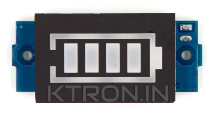
 Design with Battery Level Indicator in Cirkit Designer
Design with Battery Level Indicator in Cirkit DesignerIntroduction
A battery level indicator is an essential device that allows users to monitor the charge status of a battery. It provides a visual representation, often through LEDs or an LCD display, indicating how much power remains before the battery needs recharging. This component is widely used in portable electronics, electric vehicles, and renewable energy systems to prevent unexpected power loss and to manage battery health effectively.
Explore Projects Built with Battery Level Indicator
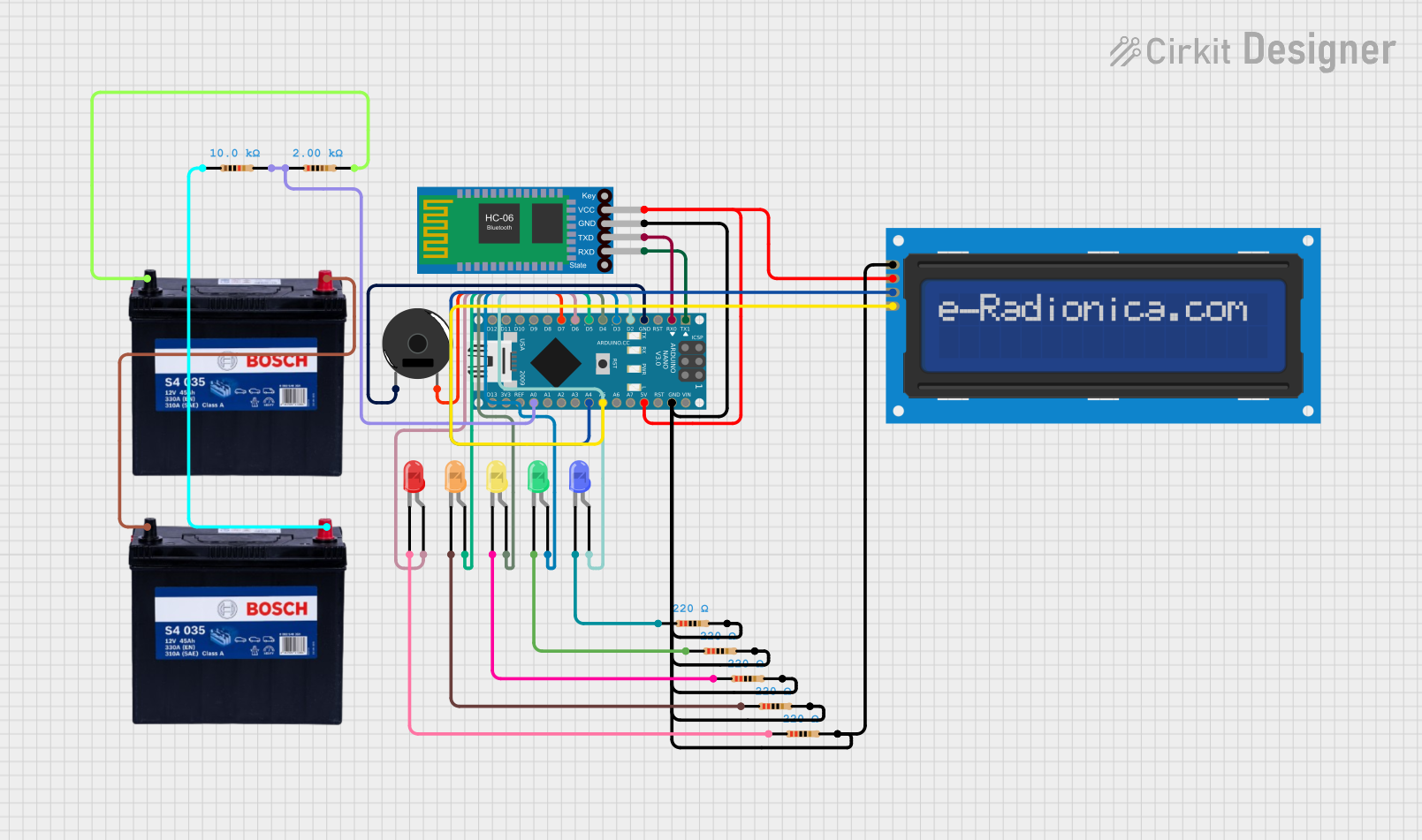
 Open Project in Cirkit Designer
Open Project in Cirkit Designer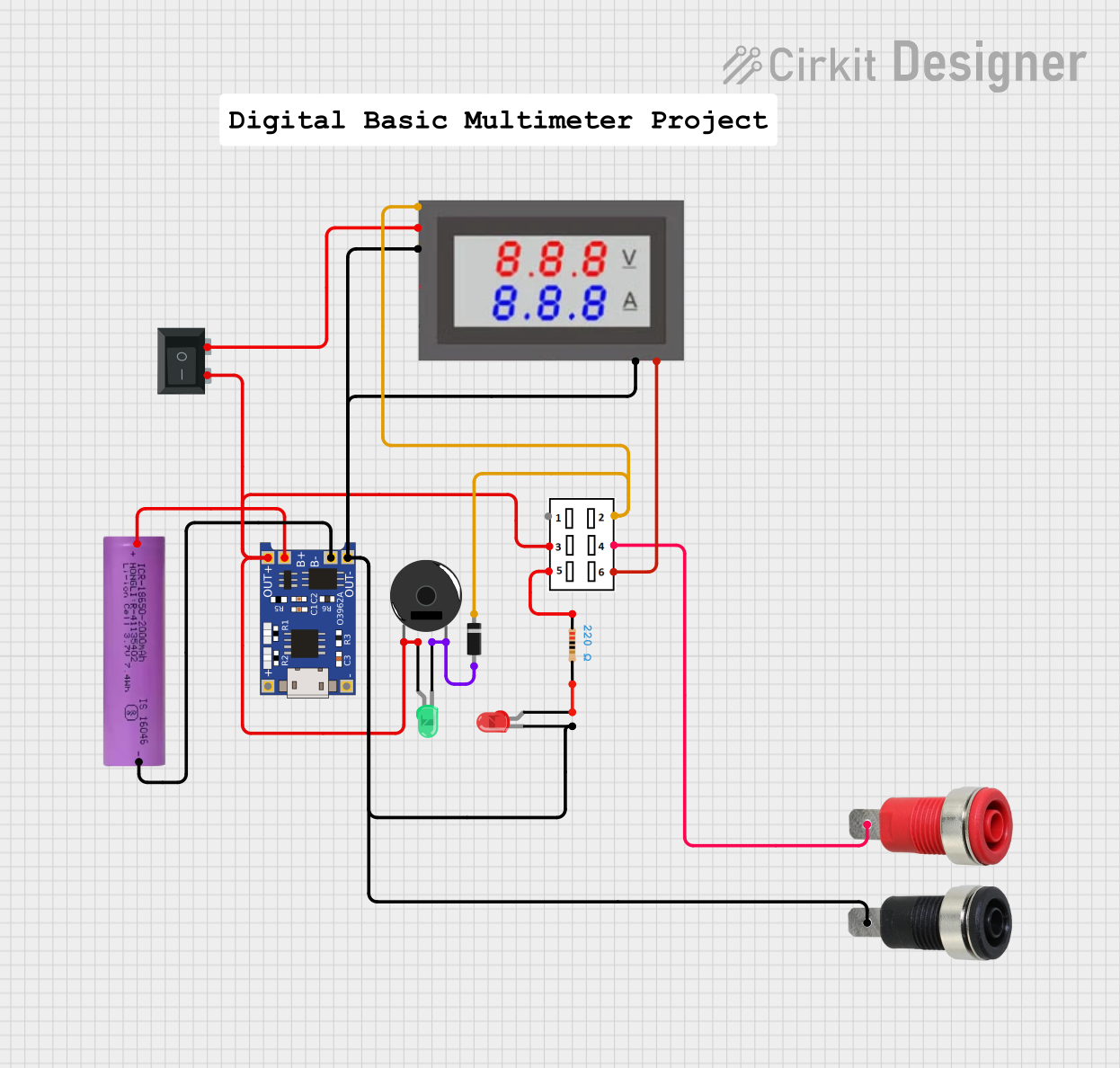
 Open Project in Cirkit Designer
Open Project in Cirkit Designer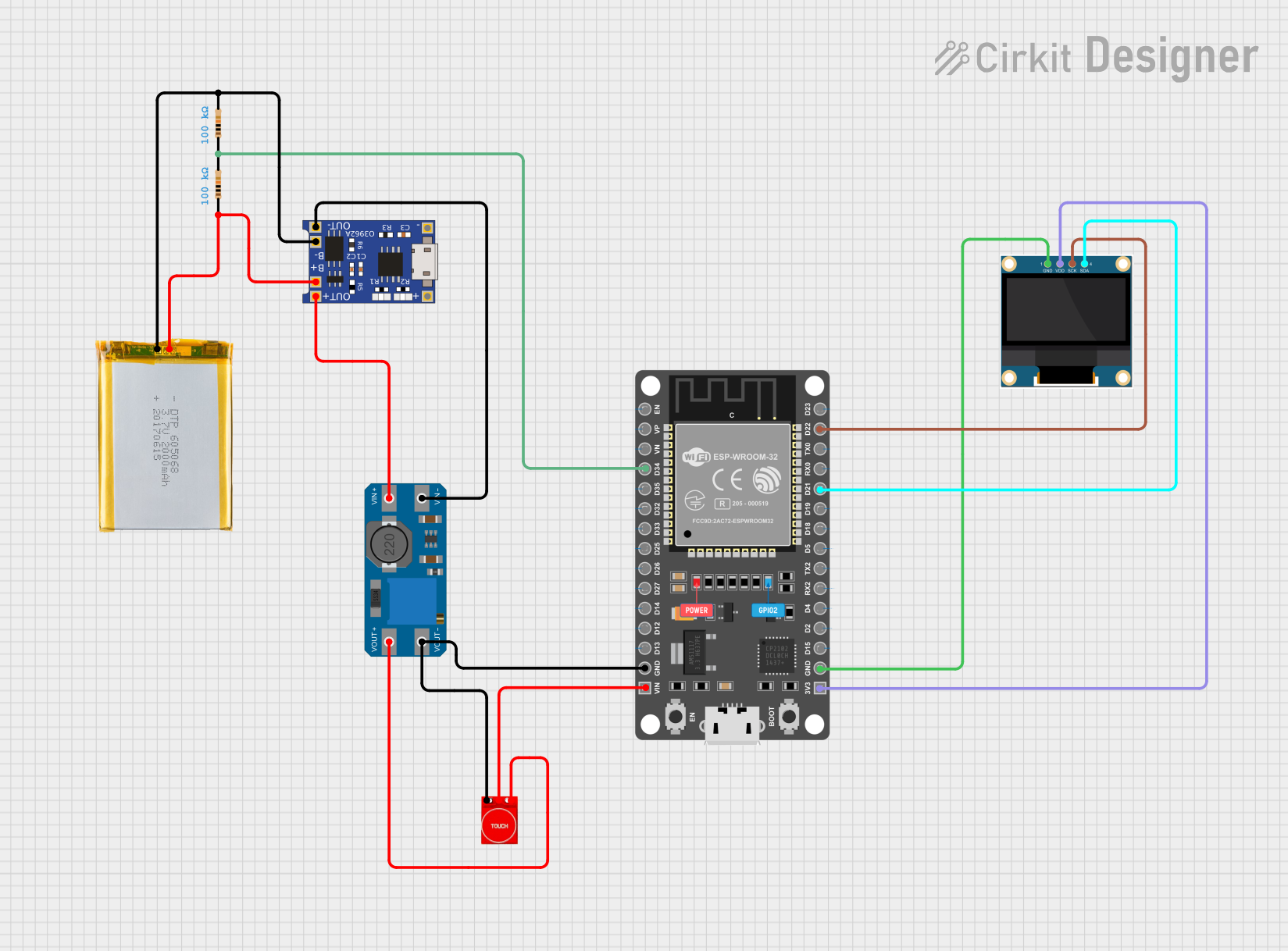
 Open Project in Cirkit Designer
Open Project in Cirkit Designer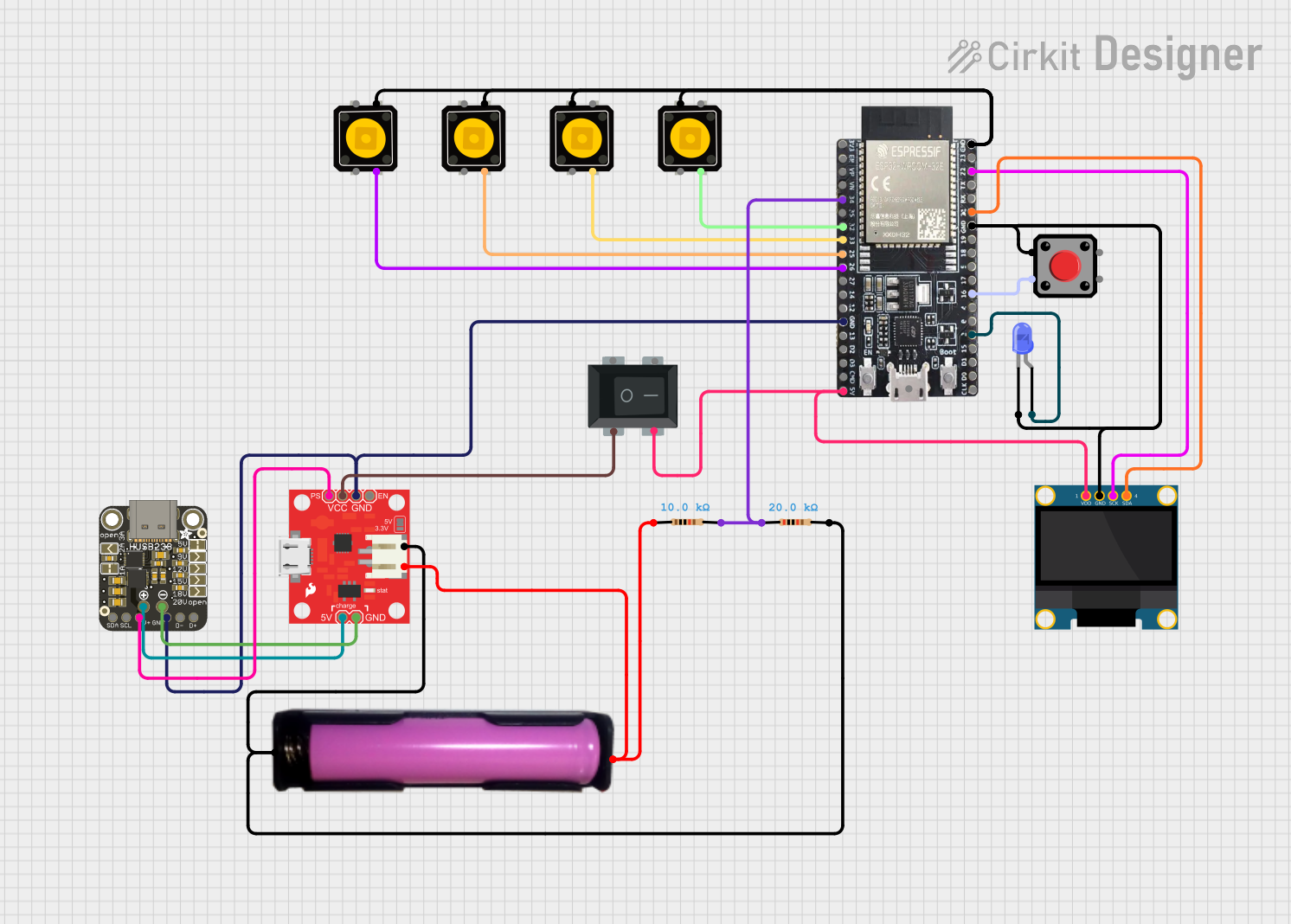
 Open Project in Cirkit Designer
Open Project in Cirkit DesignerExplore Projects Built with Battery Level Indicator

 Open Project in Cirkit Designer
Open Project in Cirkit Designer
 Open Project in Cirkit Designer
Open Project in Cirkit Designer
 Open Project in Cirkit Designer
Open Project in Cirkit Designer
 Open Project in Cirkit Designer
Open Project in Cirkit DesignerCommon Applications and Use Cases
- Portable electronic devices (e.g., mobile phones, laptops)
- Electric vehicles (e.g., electric cars, e-bikes)
- Renewable energy systems (e.g., solar power banks)
- DIY electronics projects involving battery management
Technical Specifications
Key Technical Details
- Voltage Range: The range of input voltage the indicator can measure.
- Current Consumption: The amount of current the indicator itself consumes.
- Accuracy: The precision of the battery level readings.
- Display Type: The method of displaying the battery level (e.g., LED, LCD).
- Operating Temperature: The range of temperatures over which the device can operate reliably.
Pin Configuration and Descriptions
| Pin Number | Name | Description |
|---|---|---|
| 1 | VCC | Connect to the positive terminal of the battery or power supply. |
| 2 | GND | Connect to the ground terminal of the battery or power system. |
| 3 | BAT | Connect to the battery's positive terminal for level sensing. |
| 4 | OUT | Output pin that can be used to drive an external circuit or microcontroller. |
Usage Instructions
How to Use the Component in a Circuit
- Connect Power: Attach the VCC and GND pins to your power supply or battery, ensuring that the voltage is within the specified range.
- Battery Sensing: Connect the BAT pin to the positive terminal of the battery you wish to monitor.
- Output Utilization: If your model has an OUT pin, you can connect it to a microcontroller or external circuit to take action based on the battery level.
Important Considerations and Best Practices
- Voltage Matching: Ensure that the battery voltage is within the indicator's operating range to prevent damage.
- Isolation: If using with sensitive electronics, consider isolating the battery level indicator to prevent noise interference.
- Calibration: Some indicators may require calibration for accurate readings. Follow the manufacturer's instructions for this process.
Troubleshooting and FAQs
Common Issues Users Might Face
- Inaccurate Readings: If the indicator shows incorrect levels, check for proper calibration and ensure that the connections are secure.
- No Display: Ensure that the power supply is within the operating range and that all connections are correct.
Solutions and Tips for Troubleshooting
- Check Connections: Loose or incorrect connections are often the cause of issues. Double-check all wiring.
- Power Supply: Verify that the power supply is stable and within the specified voltage range.
- Refer to Manufacturer's Guide: For model-specific issues, consult the documentation provided by the manufacturer.
FAQs
- Q: Can I use the battery level indicator for any type of battery?
- A: It depends on the indicator's voltage range and the type of battery. Always check compatibility before use.
- Q: How do I know if my battery level indicator is calibrated correctly?
- A: Compare the indicator's reading with a known, accurate voltage source or multimeter.
Example Code for Arduino UNO
// Code to read battery level from an analog battery level indicator
// and display it on the Arduino Serial Monitor.
const int batteryPin = A0; // Pin connected to the battery level indicator
void setup() {
Serial.begin(9600);
}
void loop() {
int sensorValue = analogRead(batteryPin); // Read the analog value
float voltage = sensorValue * (5.0 / 1023.0); // Convert to voltage
Serial.print("Battery Voltage: ");
Serial.println(voltage);
delay(1000); // Wait for a second before the next read
}
Note: The above code assumes that the battery level indicator's output is connected to an analog pin on the Arduino UNO and that the battery voltage does not exceed the microcontroller's maximum voltage rating. Adjust the code as necessary for your specific setup and ensure that any voltage levels are safe for your microcontroller.